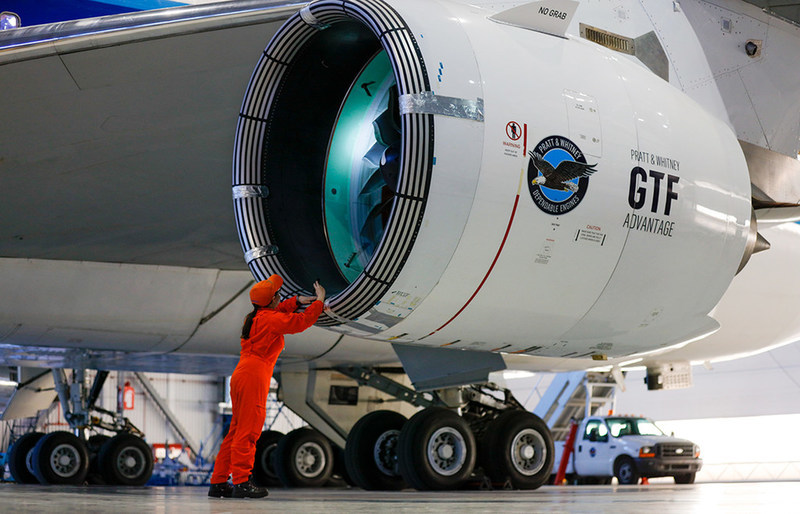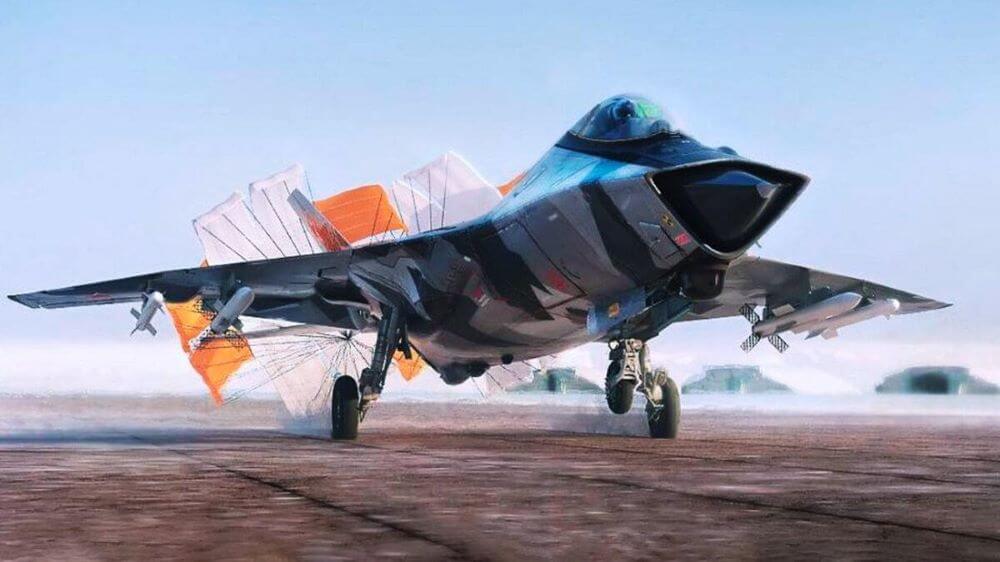SGPC takes strong notice of the ban on Sikh employees wearing kirpans at airports
Radhika Bansal
10 Mar 2022

The premier body of the Sikhs, the Shiromani Gurdwara Parbandhak Committee (SGPC) condemned the recent notification by the Ministry of Civil Aviation barring Amritdhari (initiated) Sikh employees who wear their Kakaar (Kirpan) from performing duty at the Indian airports.
President Advocate Harjinder Singh Dhami has termed the notification of the government as an attack on Sikh rights, in which, Sikh employees are barred from wearing Kirpan, one of the five Kakaars (symbols of faith).
SGPC takes strong notice of the ban on Sikh employees wearing kirpans at airports
While taking further the issue to the government of India, Advocate Dhami has written a letter to the Union minister of civil aviation Jyotiraditya M. Scindia, urging immediate withdrawal of this order issued on March 4, 2022.
"In their own country, this discrimination is a major attack on the religious freedom of the citizen Sikhs, which will never be allowed to be implemented. The government of India should never forget that the Sikhs have remained at the forefront in making sacrifices for the freedom of this country and if the culture of the country survives today it is because of the Sikhs."Advocate Harjinder Singh Dhami, President, Shiromani Gurdwara Parbandhak Committee (SGPC)
SGPC President said that it is unfortunate that in their own country excesses are being committed against the Sikhs, who die for the country. "The governments should refrain from adopting such policies which hurts the religious sentiments of the Sikhs", said Advocate Dhami.
As per the notification dated March 4, on page 5 Section 20 (ii)(b), it is written that exemption shall be given to Sikh passengers only, whereas no stakeholder or its employee at the airport (including Sikh) and working at any terminal, domestic or international, shall be allowed to carry a ‘kirpan’ on a person.
Sikh passengers can carry the ‘kirpan’ on Indian aircraft provided the length of its blade does not exceed six inches and its total length does not exceed nine inches.
As per the guidelines for a Sikh passenger, the ‘kirpan’ may be carried, provided the length of its blade does not exceed six inches and its total length does not exceed nine inches. It is allowed while travelling by air on Indian aircraft within India (domestic routes of fully domestic flights operating from domestic terminals only).
The issue was also raised by an NGO — Amritsar Vikas Manch. Sandeep Singh Gumtala of Amritsar Vikas Manch said: “If Sikh passengers are allowed to wear a ‘kirpan’ on domestic flights, it is hard to believe that Sikh employees pose a greater security threat after undergoing security clearances. To my knowledge, Sikh employees at airports in the UK, Canada are permitted to wear a ‘kirpan’ at the airside,” he said.
Read next
A pilot is a pilot irrespective of gender. But India got its first female offshore Pilot-in-Command.
While airlines operated flights with the all-women crew to celebrate Women’s Day, Pawan Hans Ltd (PHL), the public sector company that operates helicopters had its own quiet moment with history when its pilot Capt Mayuri Deshmukh became India’s first female offshore Pilot-in-Command.
“Capt Deshmukh has been flying Dauphin AS 365 N3 helicopter for Pawan Hans for over seven years now. She is the first woman in India to fly in command off-shore,” the helicopter operator said.
https://twitter.com/PawanHansLtd/status/1501178261660844032
“She is also the only woman in the country flying helicopters in the offshore sector transporting the ONGC officials from Mumbai to the offshore platforms and oil rigs,” Pawan Hans added. PHL has 120 pilots out of which four are women, said a PHL spokesperson.
Unlike flying for an airline though, pilots employed with PHL operate flights for oil and gas exploration companies, police personnel, VIP flights, corporate flights and passenger transport in remote, border, hilly and inaccessible areas of North and North East India.
https://twitter.com/PawanHansLtd/status/1501137721686851587
“Capt Deshmukh is a highly experienced and qualified pilot and also has immense exposure of flying across different terrains of the country which includes Daman and Diu and Andaman and Nicobar Islands,” said PHL.
Offshore helicopters transfer highly paid oil rig workers, engineers and executives to oil rigs and mobile survey vessels all over the world in the quest for "black gold". In addition, pilots of these aircraft will often have to fly in all weathers to evacuate rig workers in emergencies or for compassionate leave.
Read next
Several “fake” remote drone pilot training organisations (RPTO) — those falsely claiming to be recognised by the Directorate General of Civil Aviation (DGCA) — have mushroomed across India as the sunrise sector holds the promise of providing jobs to a large number of trained unmanned aerial vehicle (UAV) licence holders.
The regulator has now sounded an alarm over this malpractice so that people don’t get duped by those running these fake training schools.
Beware of hoax drone pilot training organisations - DGCA
“It has come to the notice of the DGCA… that numerous fake (unrecognised by DGCA) RPTOs are offering a remote pilot training programme, claiming to be approved by DGCA to lure the candidates by misleading advertisement…. be careful about such self-styled, unrecognised institutions which are functioning in contravention of Drone Rules 2021. A list of DGCA approved RPTOs is available @ https://digitalsky.dgca.gov.in/flight-training-organizations."Arun Kumar, Chief, DGCA
“All such (fake) organisations/persons (behind them) are warned that as per Rule 50 of Drone Rules 2021, the appropriate penalty shall be levied by DGCA if found involved in such fake activity. Further, it has come to notice that few NGOs, federations, trusts and associations are also giving misleading advertisements on their websites, claiming to be associated with DGCA/approved by DGCA and collecting membership fees from drone startups and companies in the drone Industry…. be cautious about such demand as DGCA does not support such activity,” it adds.
Information about such fake RPTO can be reported to the DGCA drone directorate on email: drone.dgca@gov.in
Read next
Pratt and Whitney conducts a successful engine test on 100% sustainable aviation fuel
Prashant-prabhakar
18 Mar 2022

In what can be described as a critical element of an extensive development program for the unveiling of the "GTF Advantage" engine, Pratt and Whitney have performed a successful test on the engine on 100% sustainable aviation fuel.
Representative | Pratt and Whitney
We’re thrilled to have successfully tested the GTF Advantage engine on unblended SAF. The GTF Advantage represents the greenest, lowest emission engine in the industry, and it is now demonstrating full operational capability for the greenest aviation fuels of today and tomorrow. Operation on 100 percent SAF is a key component of the industry’s commitment to net zero carbon emissions by 2050 and the completion of these tests get us closer to that goal.Graham Webb, Chief Sustainability Officer at Pratt & Whitney
PRATT & WHITNEY GTF ADVANTAGE™ ENGINE
Since entering service in early 2016, GTF engines have saved operators more than 600 million gallons (more than two billion litres) of fuel and avoided more than six million metric tonnes of carbon emissions. With more than 1,100 aircraft, 58 airlines and three aircraft families – Airbus A320neo, Airbus A220 and Embraer E-Jets E2 – GTF engines have also reduced noise footprint by 75% and regulated emissions by 50% to the CAEP/6 regulatory standard.
Representative | Avimeter
Specifically designed for the A320 neo family, it boasts of:
Enhanced sustainability:
Up to 17% lower CO2?emissions vs. prior generation engines like V2500Compatible with 100% SAF?
2. Improved operating costs
Sea level takeoff thrust up to 34,000 pounds per engine?Significant improvements in high altitude take-off thrust?
3. Enhanced reliability:
Builds on mature dispatch reliability of 99.97%?Delivers more thrust at lower temperaturesExtensive endurance testing for high durability?
4. Ease of airline operations:
new model engines can replace base model engines, and vice versa, giving airlines ultimate?flexibility?in their operations.?aircraft will be able to operate one of each configuration. Advanced software will make this invisible to the pilots, delivering maximum efficiency no matter the pairing.?
This new configuration delivers higher thrust, both at sea level and for "hot and high" airports, thereby making it the most powerful engine for the A320neo family.
Representative | SP's Airbuzz
Sustainable aviation fuels are central to the challenge of decarbonizing aviation and reaching our industry’s net zero goal. Validating and certifying the GTF Advantage engine on 100 percent SAF will ensure this engine’s ability to deliver sustainable propulsion to our customers over many decades of service. We remain dedicated to working with the industry on creating a viable path for SAF development, production and distributionSean Bradshaw, technical fellow for sustainable propulsion at Pratt & Whitney said
Reportedly, the SAF used by the company is 100% Hydroprocessed Esters and Fatty Acids Synthetic Paraffinic Kerosine (HEFA-SPK) fuel acquired from World Energy.
https://www.youtube.com/watch?v=3Lzscd4GNzo
Pratt and Whitney | Youtube
HEFA-SPK is a specific type of hydrotreated vegetable oil fuel used in aviation and is considered a leading alternative replacement for conventional jet fuel by CAAFI due to the sustainability of its feedstock
Touted to extend its lead as the most efficient and most powerful engine choice for the A320neo family, the engine is slated for a 2024 entry into service.
SOURCE(s)
COVER: Asian Aviation
Read next
Using In-House developed Hybrid Technology, which will be used as Research & Development (R&D) facilities for the development of India's indigenous fifth-generation fighter craft- the AMCA, the Defence Research and Development Organization (DRDO) has built a 7-storey building in Bangalore, in a record 45 days.
Tribune | DRDO |
Hybrid Technology features column and beam elements built with steel plates while the columns are of hollow steel tubular section. These columns are concrete-filled steel hollow cross-sections. The slabs are partially precast and all these structural members are assembled at the site.
The DRDO has completed the construction of a multi-storey infrastructure for flight control system at ADE Bengaluru with hybrid technology consisting of conventional, pre-engineered and precast methodology in record 45 days.DRDO
https://twitter.com/PIB_India/status/1504407868908670976
The facility, inaugurated by Defence Minister Rajnath Singh, is a Flight Control System at Aeronautical Development Establishment, comprising of a plinth area of 1.3 lakh square feet.
Defence Minister Rajnath Singh | The Hindu
India has been working diligently on its ambitious 5th generation stealth fighter program - Advanced Medium Combat Aircraft (AMCA), which would feature advanced stealth properties, thereby significantly boosting its aerial prowess in the years to come.
A static model of AMCA on display | Representative | Twitter
It is a unique record of completing a permanent building of seven stories with Hybrid construction technology that too in ready to move condition for the first time ever in the history of the construction industry in the country.DRDO officials
The foundation stone for the project was laid on November 22, 2021, while the actual construction commenced on February 1.
Reportedly, the building architecture inculcates design check and technical support provided by teams from IIT-Madras and IIT-Roorkee, and features air-conditioning, electrical and fire protection systems as per standard design norms and IS codes.
India Today
Karnataka Chief Minister Basavaraj Bommai and DRDO Chief G Satheesh Reddy were also present at the inauguration.
SOURCE(s)
COVER: Hindustan Times
Read next
MiG-41 | Does it exist? Will the Russian "mystery" stealth fighter ever fly?
Prashant-prabhakar
15 Mar 2022

Back in the mid-90s, Russia had little or no need for new interceptors. If we go back in history, Mikoyan Gurevich - the Russian military aircraft design bureau, had been designing the MiG-25 and the MiG-31- both of which are capable of speeds of over Mach 3.2 and 2.83 respectively.
Come 2010, the former Soviet Union once again started investing heavily into its defence industry- owing to the changing global scenario. It wasn't long before rumours of a "superfast interceptor" being built by MiG, started doing the rounds.
Representative | Source
To grab a better perspective, let's fly back in history a little bit.
The Mikoyan Interceptor series
MiG-25 Foxbat – The legend
An Indian Air Force MiG-25R Foxbat | The Better India
With a service ceiling of 20,700 meters, the Foxbat was designed to intercept missiles and high-speed American aircraft-such as the SR-71, BlackBird. In comparison to the SR-71, the Foxbat was not only a surveillance aircraft but also carried four air-to-air missiles, making it a deadly weapon. A total of over 1100 units of the bird were built, thereby cementing its success for future variants.
The Foxbat could be equipped with:
GUNSNONEMISSILES2x R-40R (AA-6 „Acrid“)2x R-40T missilesmigflux.com
MiG 31 – the successor of the MiG-25
MiG-31 | Wikipedia
Yet another interceptor built to take out hostiles at any altitude, the MiG-31, NATO reporting name Foxhound- had a top speed of 2.83 Mach and a service ceiling almost as high as the MiG-25. The Foxhound featured an upgraded weapons system as compared to its predecessor and could be equipped with :
GUNS1x Gsh-6-23 cannon4× R-33 (AA-9 ‚Amos’6× R-37 (AA-X-13 ‚Arrow’6× R-37 long-range missiles4× R-33 long-range missile4× R-60 (AA-8 ‚Aphid‘)4× R-73 (AA-11 ‚Archer‘)MISSILES4× R-77 (AA-12 ‚Adder(only some aircraft) Kh-31P (AS-17 ‚Krypton)migflug.com
MiG-41- will it ever take to the skies?
In a technical world, the term "vaporware" refers to any product which is in its infancy and is unavailable yet. The success rates of "vaporware(s)" are reportedly low and most of them fail to even make it to the market.
If reports are anything to go by, Russia’s fifth-generation plus or even sixth-generation Mikoyan MiG-41 stealth interceptor-being developed under the PAK DP program seems to fall into the category of "military vaporware".
The Mikoyan PAK DP is a Russian programme to develop a stealth interceptor aircraft/heavy fighter under development by Mikoyan to replace the MiG-31 in the Russian Air Force by the mid-2030s.
The first mention of the creation of a new interceptor fighter appeared at the beginning of 2014. Then there were reports about the possibility of a supernova interceptor. It was only during the end of 2017, that Russian media came out with authentic news on the creation of a new generation high-altitude interceptor.
Although not much is known about this fighter, as is with any top military project(s), what we do know, is the fact that it would feature a ramjet or turboramjet engine and would utilize stealth technology and be capable of reaching a speed of Mach 4 to 4.3. Apparently, there are also reports claiming it would be capable of carrying anti-satellite missiles and operating in near-space environments.
Some have even gone as far as to claim it could also down a hypersonic missile.
The deadlines set for the eventual release of the fighter also seem to be unrealistic at best.
By 2028, the fighter-interceptor MiG-31 will cease to exist… We have the time to create a new aircraft as a replacementMiG chief Sergey Korotkov commented during an event in South America in 2016
It is also worth noting that in many of the articles written between 2013 and 2020 about the unrealized project, no mention has been made with regards to its manufacture or its hypersonic capabilities.
Therefore, it is highly unlikely that the MiG-41 will take to the skies by 2025 as previously expected and even more unlikely that it would replace the MiG-31 by the end of this decade.
SOURCE(s)
COVER: Defence View



Comment